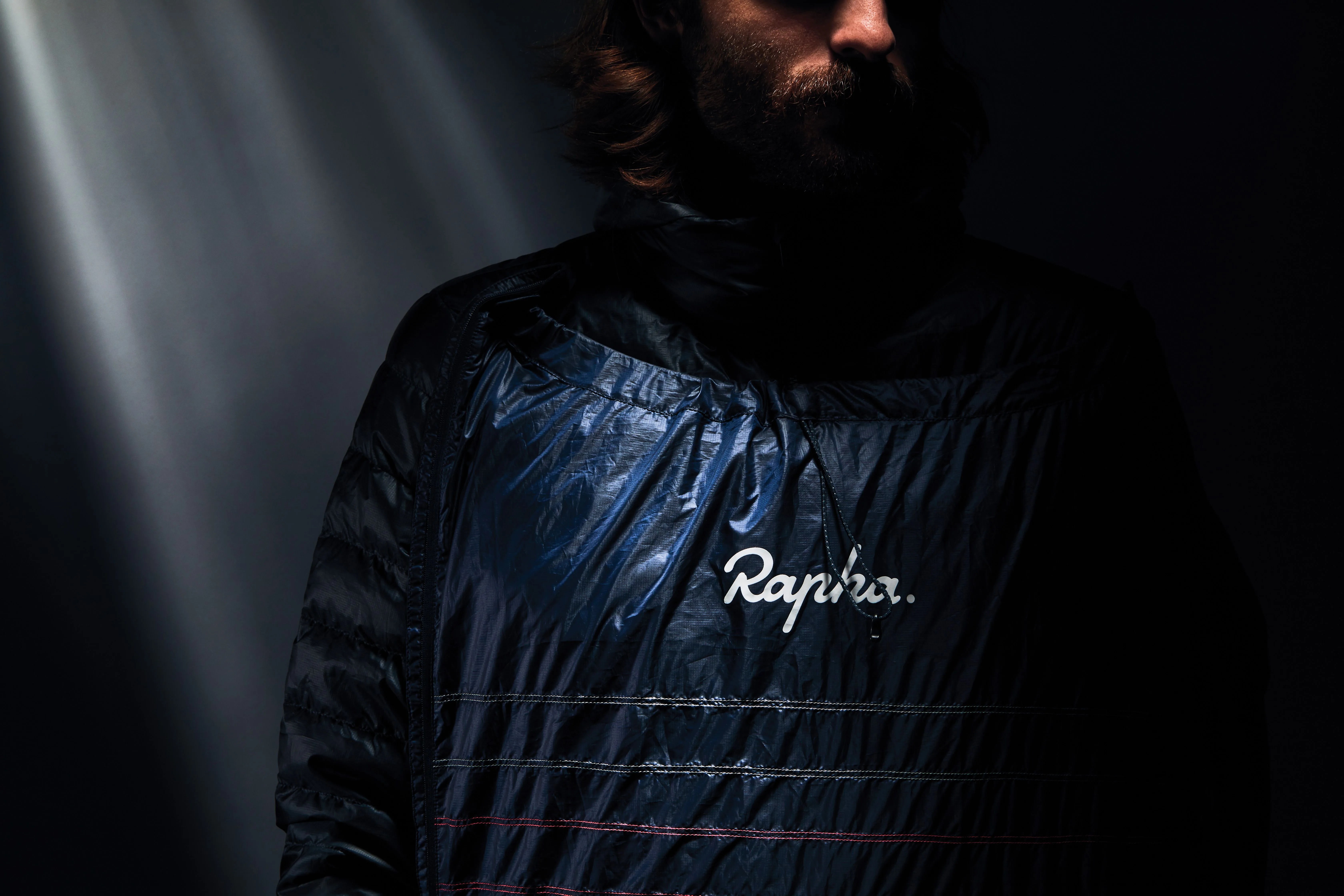This story is part of the GP100, Gear Patrol’s annual index of the 100 best products of the year. To see the full list of products or read this story in print, check out Gear Patrol Magazine: Issue Eight, available now at the Gear Patrol Store.
It’s rare that innovations in the outdoor industry correlate to major improvements on the consumer end. Fact is, many brands use “innovation” as a way to create marketing materials and sell more product, rather than equip outdoor enthusiasts with the best products possible. But this year feels different. This year is full of twofers: products that eliminate the need for a quiver. From a ski binding designed to go downhill as well as it goes uphill to a single goggle ski lens that’s really three-in-one to a rooftop tent that doubles as a cargo box, outdoor companies are finally giving buyers what they need.
Tepui Hybox
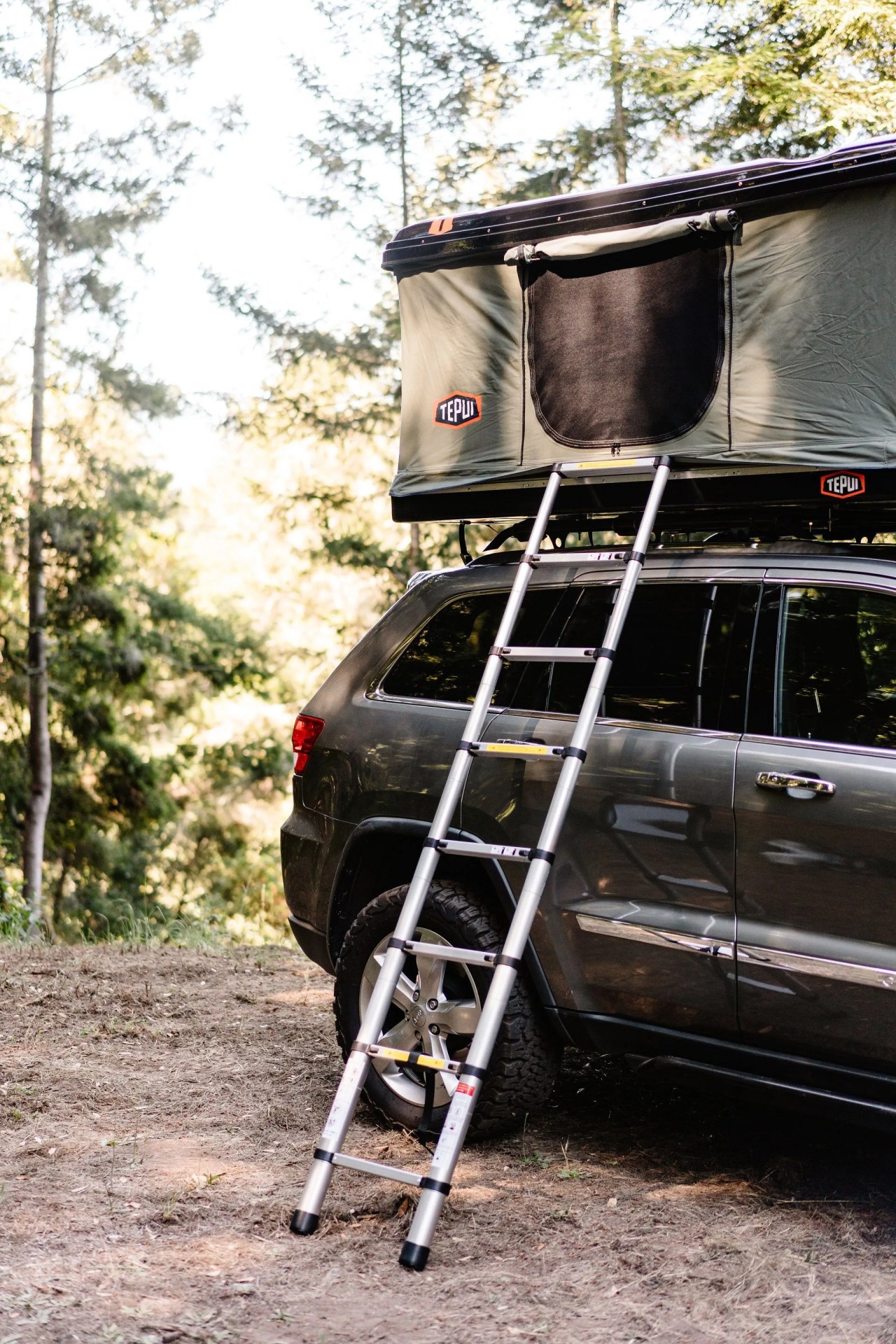 Tepui/Ryan Elizabeth Tuttle
Tepui/Ryan Elizabeth TuttleWhy camp on the ground when you can strap a deployable shelter to the top of your adventure vehicle? Rooftop tents don’t require any finicky set-up process and they’re often more spacious and comfortable, too. But adventurers do have one choice to make when a tent’s up top: where to put the cargo box. The HyBox solves that conundrum. It deploys as a rooftop shelter but its mattress and walls are removable, leaving a high-strength ABS box to function as a catch-all for gear when camping’s not on the itinerary. — Tanner Bowden
- Carrying Capacity: 23 cubic feet, up to 165 pounds of gear
- Mattress: 3-inch foam, removable cotton cover
- Sleeps: 2 people
Osprey Levity
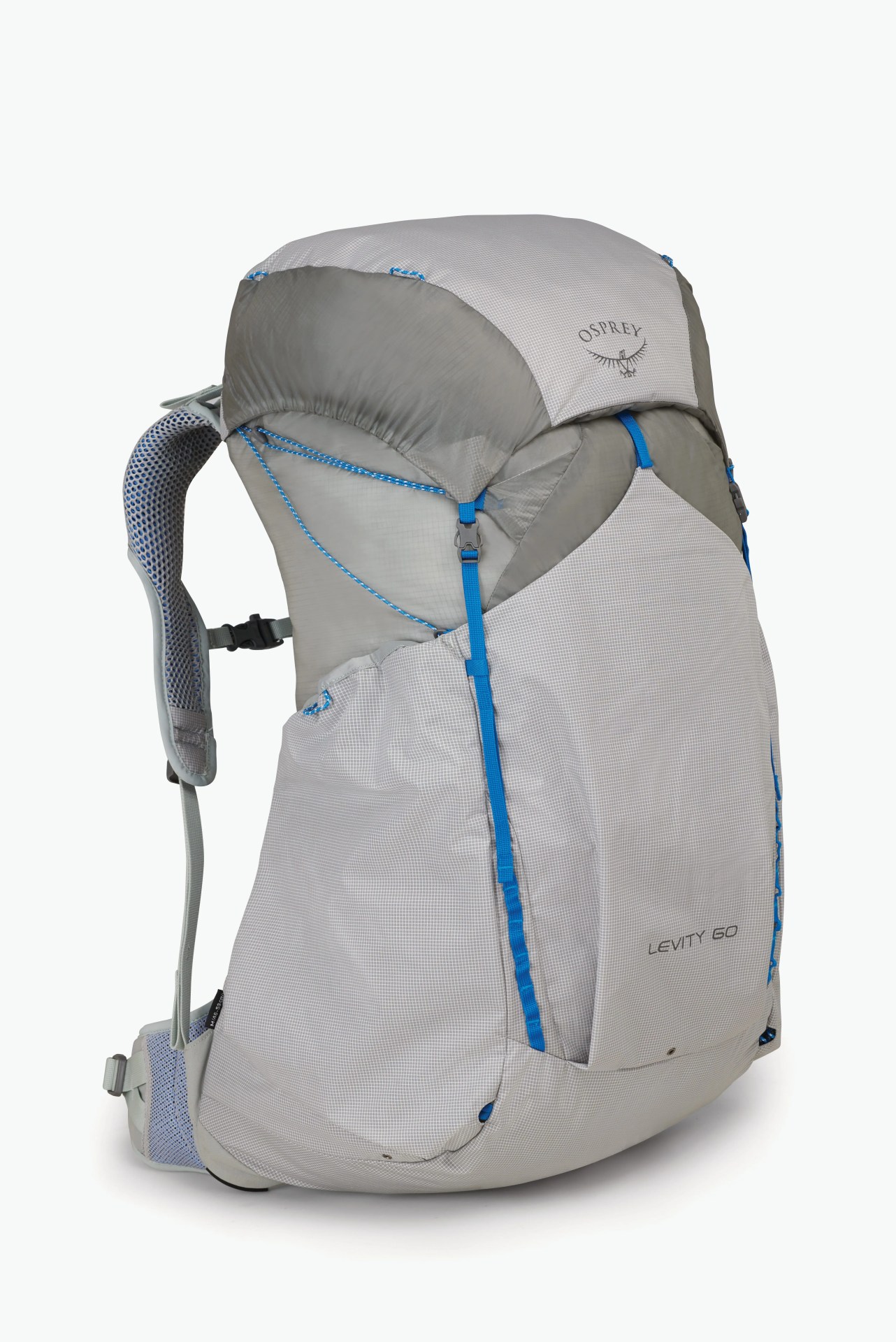 Osprey
OspreyMost people don’t know that ultralight backpackers — like thru-hikers — often use custom backpacks or ones made by smaller brands you can’t find in gear shops. For mainstream pack makers, the term “ultralight” has mostly been marketing spin. Osprey is dismantling that notion with the Levity, which weighs a mere 1.95 pounds (60-liter capacity, size medium) and doesn’t cut corners on bells and whistles. Ultralight gear just became more readily available. — TB
- Sizes: 45 and 60 liters
- Main Fabric: 30D Cordura silnylon ripstop
- Number of Pockets: 5
Salomon S/Lab Shift MNC Binding
 Chase Pellerin
Chase PellerinSkiers who want to explore terrain beyond resort boundaries have forever faced a quandary: is the experience worth investing in a second pair of skis, boots and bindings? The cost alone is often prohibitive, especially for a novice who might only venture into the backcountry a handful of times. The available compromise, until now, has been a frame binding like Marker’s Duke or Salomon’s Guardian, but these are exceedingly heavy, making them inefficient for both uphill exploration and skiing downhill.
Do a few runs, a few days, and you don’t even think about what’s on your feet.
Salomon’s S/Lab Shift MNC binding settles the matter. It’d be easy to get tangled up in the binding’s highly-technical details (it has 300 parts), but the principal innovation is the toe piece. Like traditional touring bindings, it’s equipped with pins for uphill travel, but the activation of a lever transforms the apparatus into an alpine binding for downhill skiing, delivering more security and better performance. While most touring bindings lack an adjustable DIN setting (which helps release the ski during a fall to prevent injury), the Shift is fully certified to all safety norms. “Safety is the key. If it’s not meeting the norms then it’s not worth having a beefier binding like this,” says skier Chris Rubens, who was involved in the Shift’s seven-year development.
The inevitable follow-up question is “Yeah, but how does it ski?” Good. Great actually, and while ascent-dedicated skiers might still opt for the lightest binding available, the Shift’s ability to ski like a true alpine binding, with equal power transfer and responsiveness, covers all bases. “The first couple times we started testing, we were like, “Oh, I don’t know,” says Salomon athlete Cody Townsend. “Do a few runs, a few days,” he continues, “and you don’t even think about what’s on your feet. This’ll be my go-to binding all the time.” — TB
- Weight: 865 grams (with brakes and screws)
- DIN Range: 6 -13
- Climbing Risers: 2 and 10 degrees
 Gear Patrol
Gear PatrolChris Reeve Knives Impinda
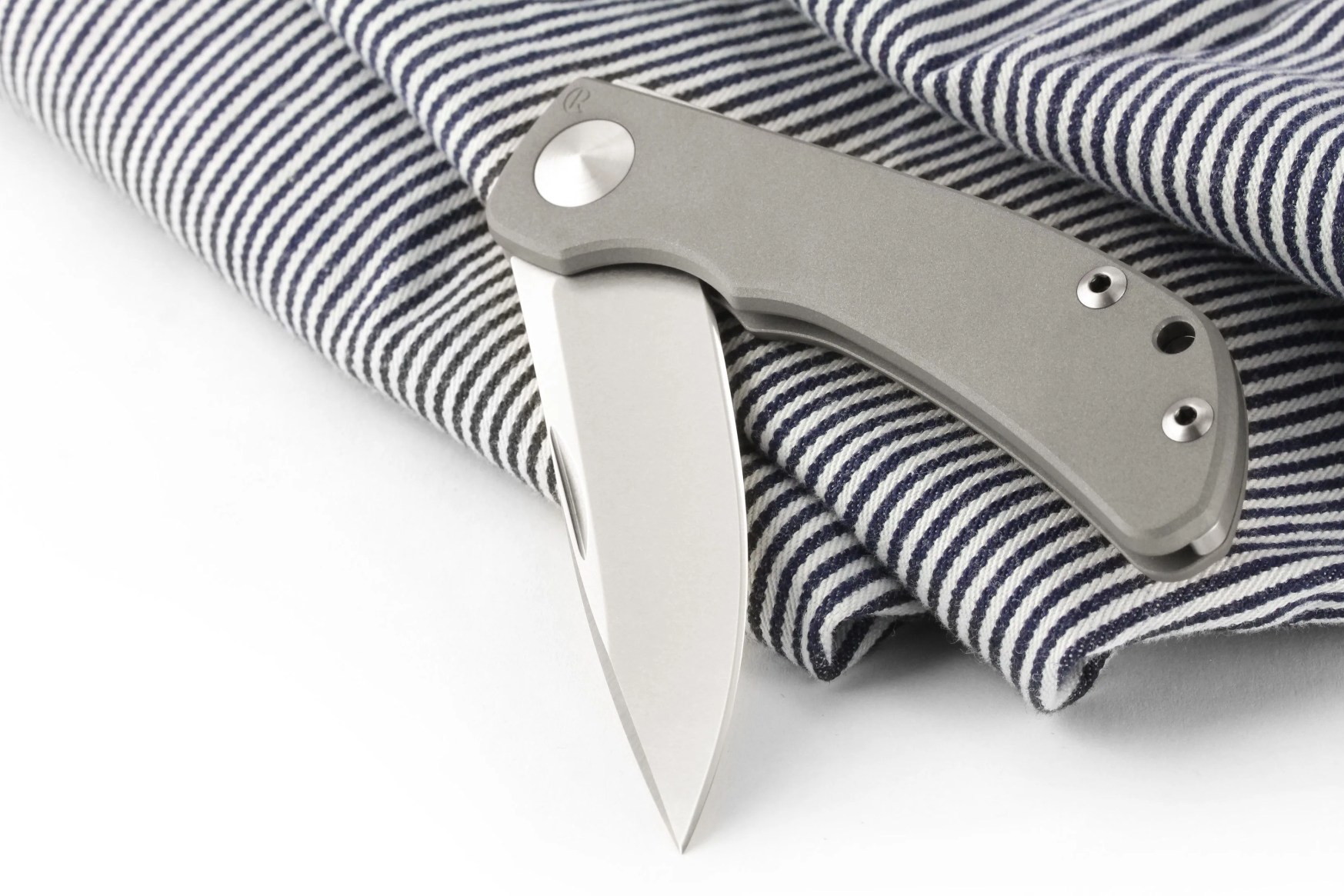 Chris Reeves Knives
Chris Reeves KnivesIn order to progress forward, the much-lauded company Chris Reeve Knives had to take a step back. Their first new design in two years, the Impinda, abandons the locking frame that helped make the company so famous. Instead, the design employs a simple slip-joint construction that’s non-locking by design — a first for the brand. The Impinda has everything you need in an everyday knife — high-grade stainless steel and titanium and an understated profile — and nothing you don’t. — TB
- Weight: 3.38 ounces
- Overall length: 7.14 inches
- Blade length: 3.12 inches
Yeti Hondo Base Camp Chair
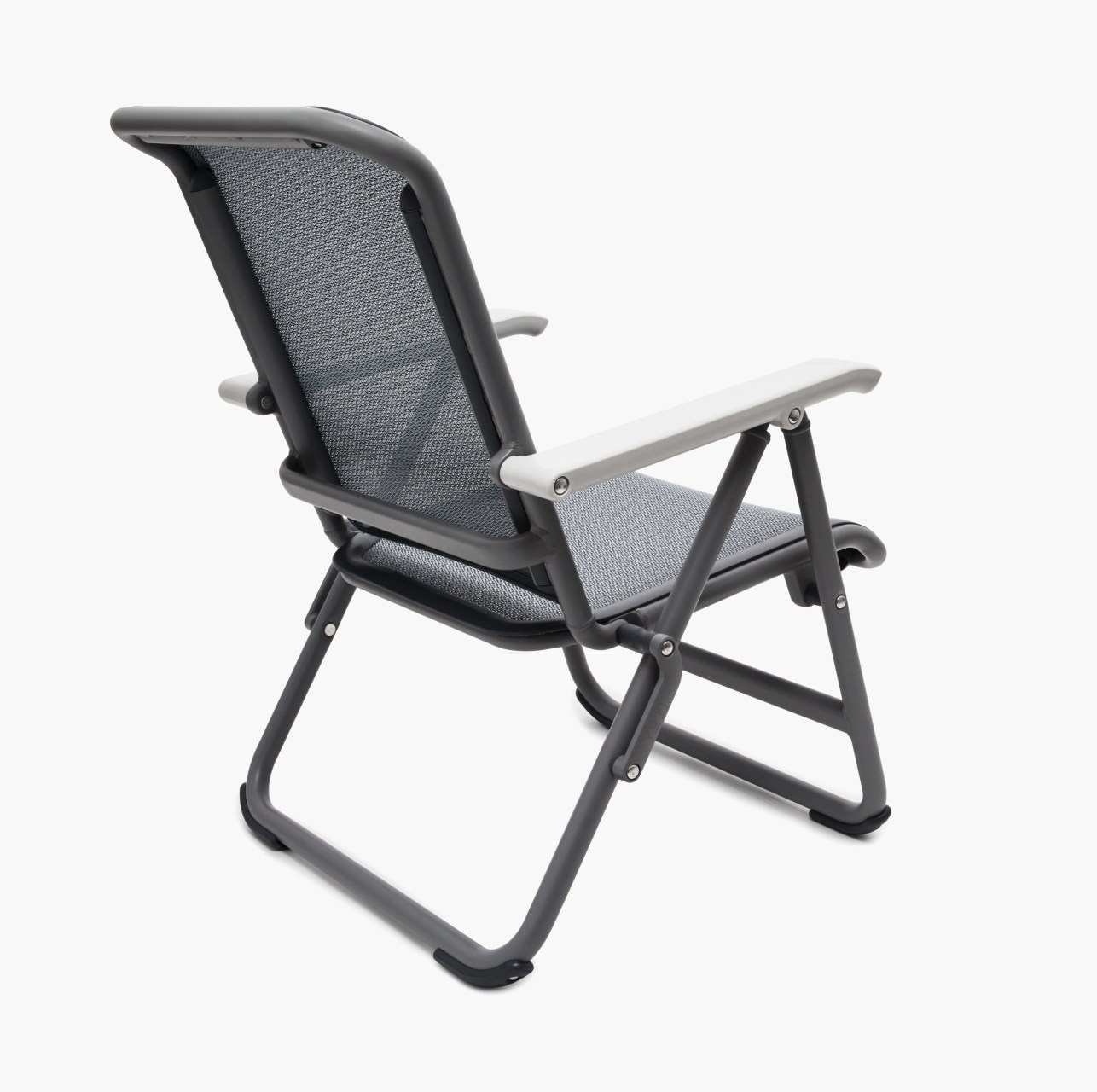 Yeti
YetiThe Yeti Hondo may be overbuilt for some, but for fishing, car camping and tailgating, it does stability and comfort better than any other chair on the market. Its strength comes from a nearly 24-hour age-hardening heat treatment on the steel frame, and from stretching and molding the fabric together to attach it to the steel — a design practice employed on the notable Herman Miller Aeron Chair. In Yeti’s testing, it proved to hold more than 3,000 pounds (the weight of your average Honda Civic). — AJ Powell
- Weight: 16.5 pounds
- Seat: Tensioned fabric
- Accessories: Built-in cup holder (stays upright even when chair is folded)
Rapha Explore Sleeping Bag and Down Jacket
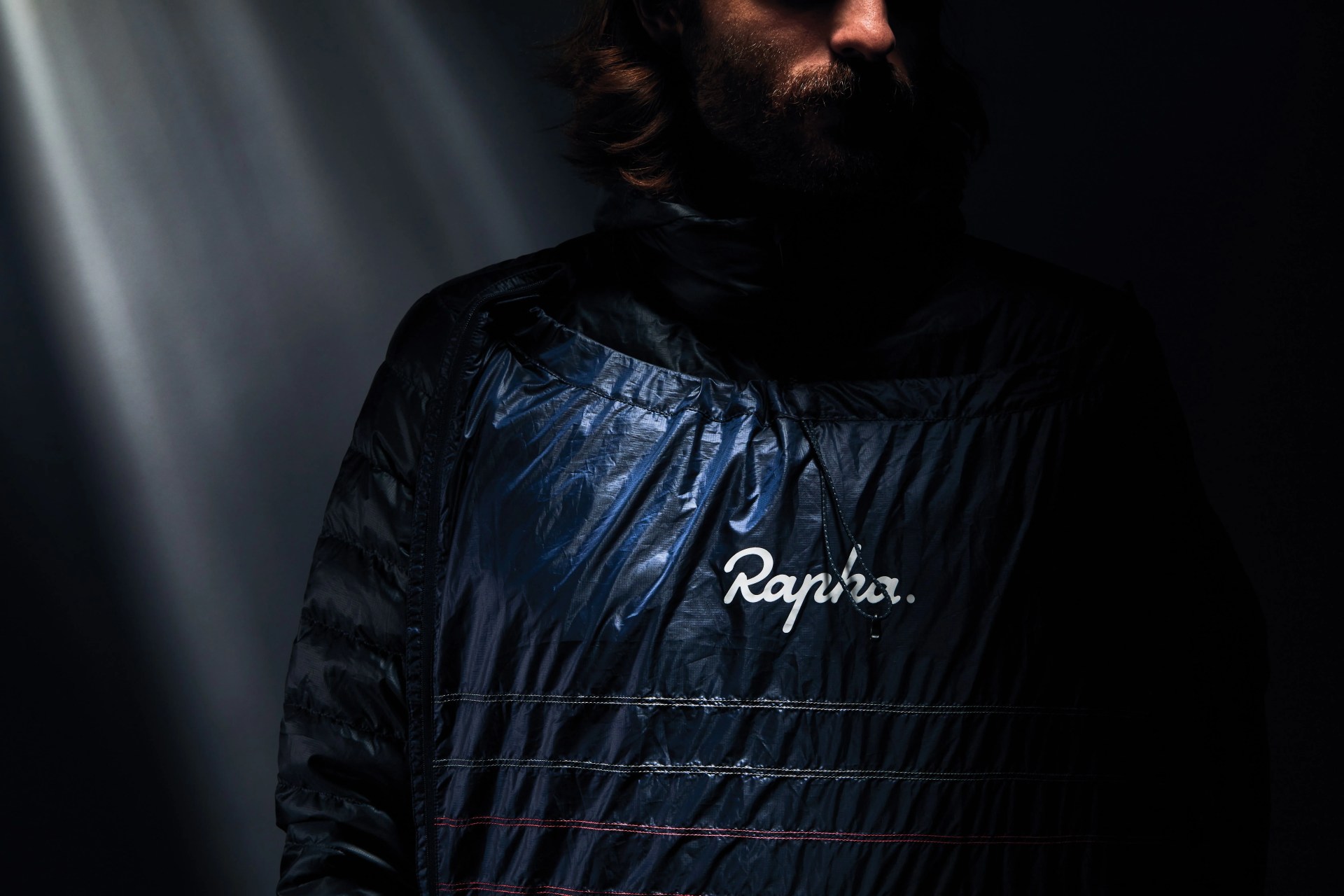 Chase Pellerin
Chase PellerinRapha is well known for its classically clean cycling apparel that fits and performs well on two wheels. You’ve likely seen the brand’s iconic bright pink accents on products like socks, jackets and base layers. This past year, Rapha experimented with luggage, with the same minimalist, upscale take. Next up, they’re turning their focus to the growing segment of bikepacking.
To cater to this trend, Rapha has developed a unique sleeping-bag-and-down-jacket combo that is built to be used in tandem, but is sold separately. By slimming down some of the insulation around the midsection of the sleeping bag and expecting people to pair it with the down jacket to make up that warmth, Rapha has created a product that’s more compressible and space-saving than carrying a traditional down jacket and sleeping bag would be, but is just as warm.
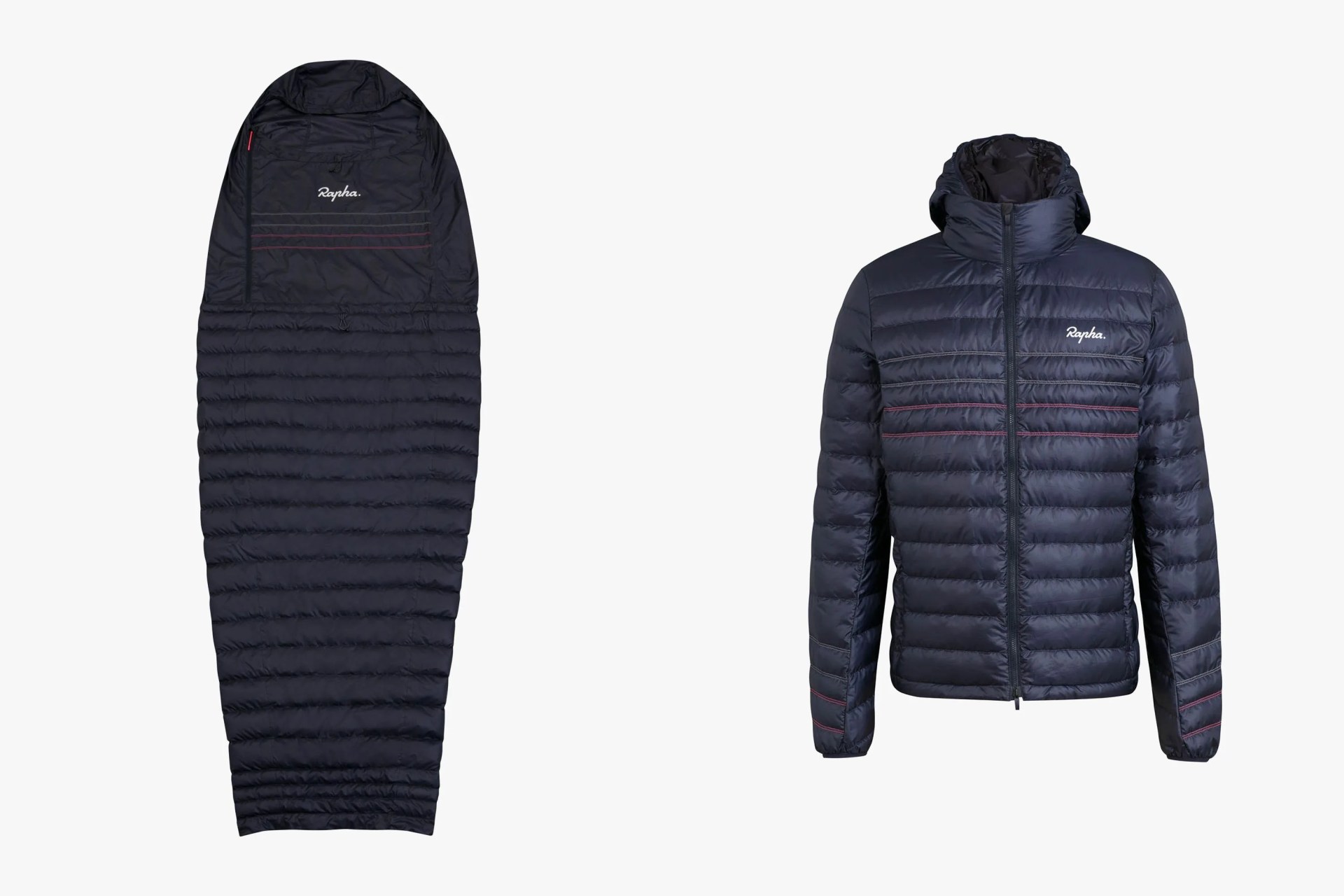 Rapha
RaphaThe Explore’s lightweight durable woven nylon fabrics, which are rated to 23 degrees Fahrenheit, are stuffed with premium and traceable 850-fill goose down. The DWR-coated jacket features a relaxed fit — slightly different than the slim cut for which the brand is typically known — but is better suited for sleeping. Remove the hood before you climb into the bag at night, or use it to keep your head warm in colder temperatures. A closable vent at the bottom allows you to dump heat or even walk around camp wearing the bag.
This isn’t Rapha’s first bikepacking product, but the brand decided it was time to start thinking about the category in a meaningful way. “We’ve spent years developing our new Explore range,” Alex Valdman, creative director at Rapha, says of the collection that includes cargo bib shorts, technical tees and polos. “We are continuing to build it out with functional must-have items for anyone who is planning an adventure.” — Meg Lappe
- Down: 850 fill, 90/10, PFC-free, DWR-coated
- Jacket Colors: Dark navy, dark green, black
- Weight: 270 grams (sleeping bag size S/M), 230 grams (jacket size medium)
Tecnica Forge
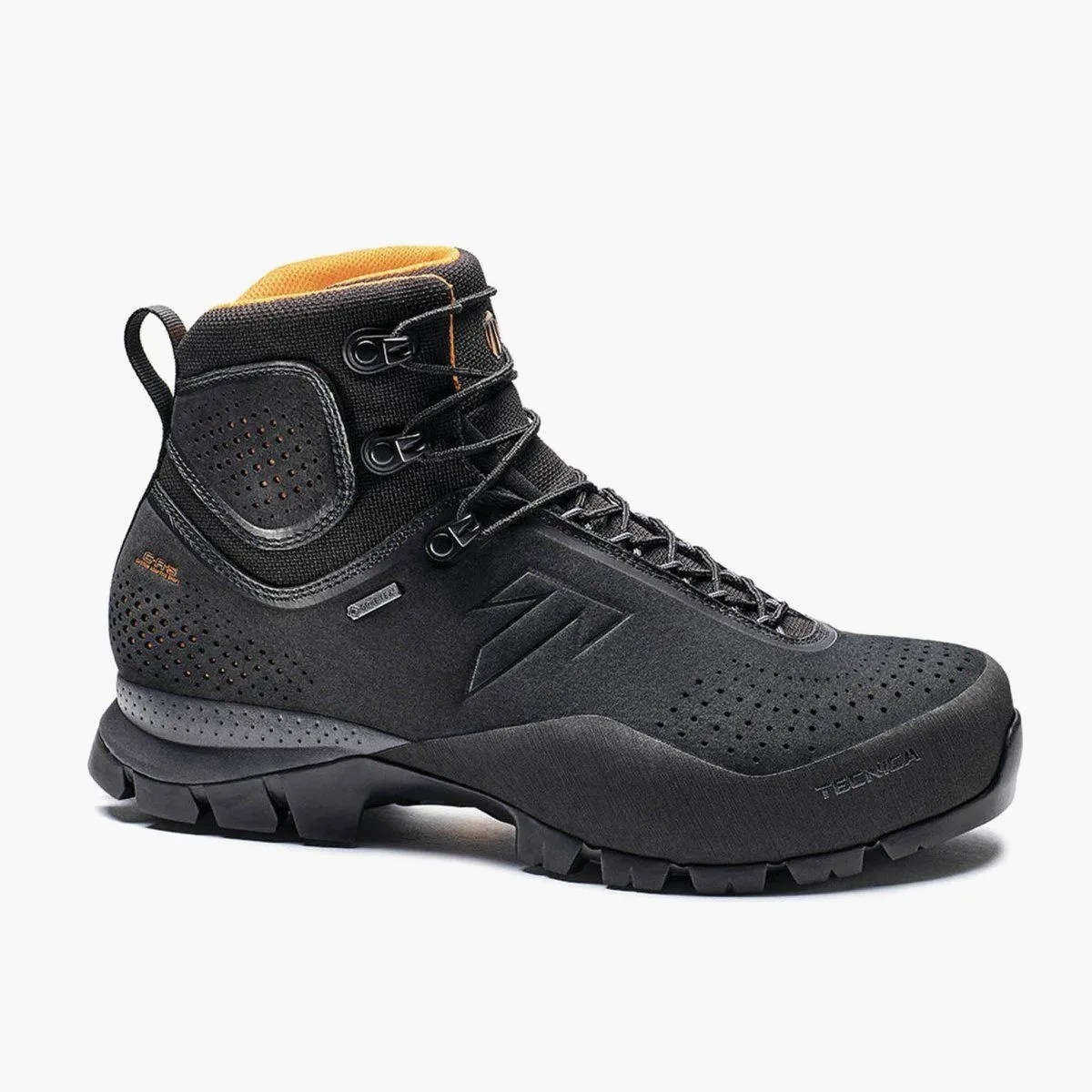 Technica
TechnicaThe best long-distance hiking boots have always been stiff and hard to break in. This year, Tecnica, a company best known for producing ski products, put their focus on warm weather activities. By using technology often associated with custom ski boots, in which footbeds are warmed in an oven and then molded to the owner’s actual foot shape, Tecnica created a hiking boot with a shapeable footbed and upper. The result: a comfortable, form-fitting hiking boot with an unheard of near-perfect fit on day one. — TB
- Upper: Nubuck or synthetic stretch fabric
- Sole: Vibram
- Waterproofing: Gore-Tex
Patagonia Capilene Air Baselayers
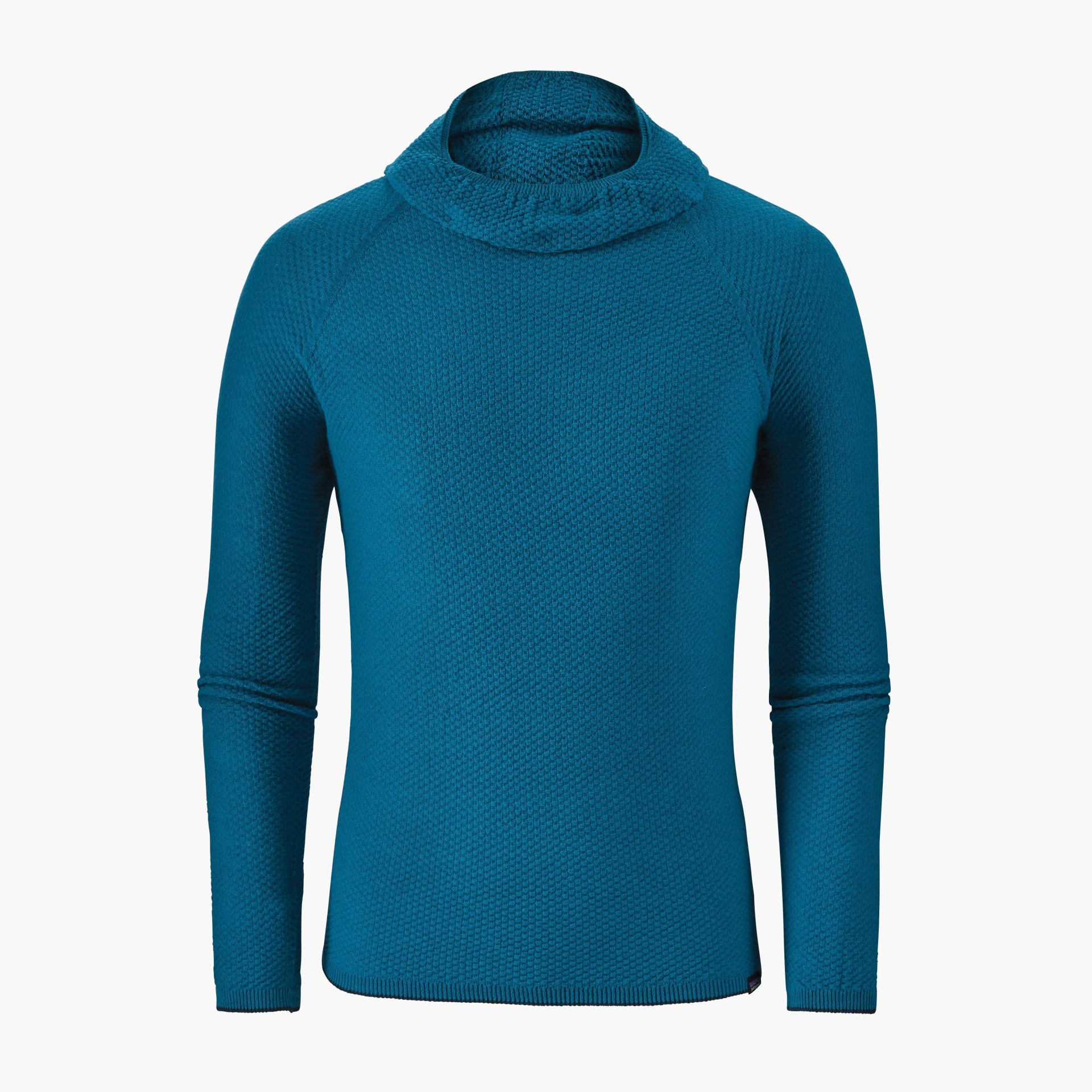 Patagonia
PatagoniaPatagonia introduced the outdoor community to the concept of layering for thermoregulation in the 1980s, and its most recent introduction to the category, Capilene Air, is its best yet. Credit the collection’s 3D yarn (a polyester and merino wool blend) and its sweater-like, seam-free pattern, both of which optimize warmth and breathability in a wide range of temperatures. They’re some of the most versatile and comfortable base layers we’ve ever tested. — TB
- Materials: 51% merino wool, 49% polyester
- Yarn Diameter: 18.5 microns
- Styles: Hoody, long-sleeve crewneck, leggings
Pivot Mach 5.5 with Live Valve
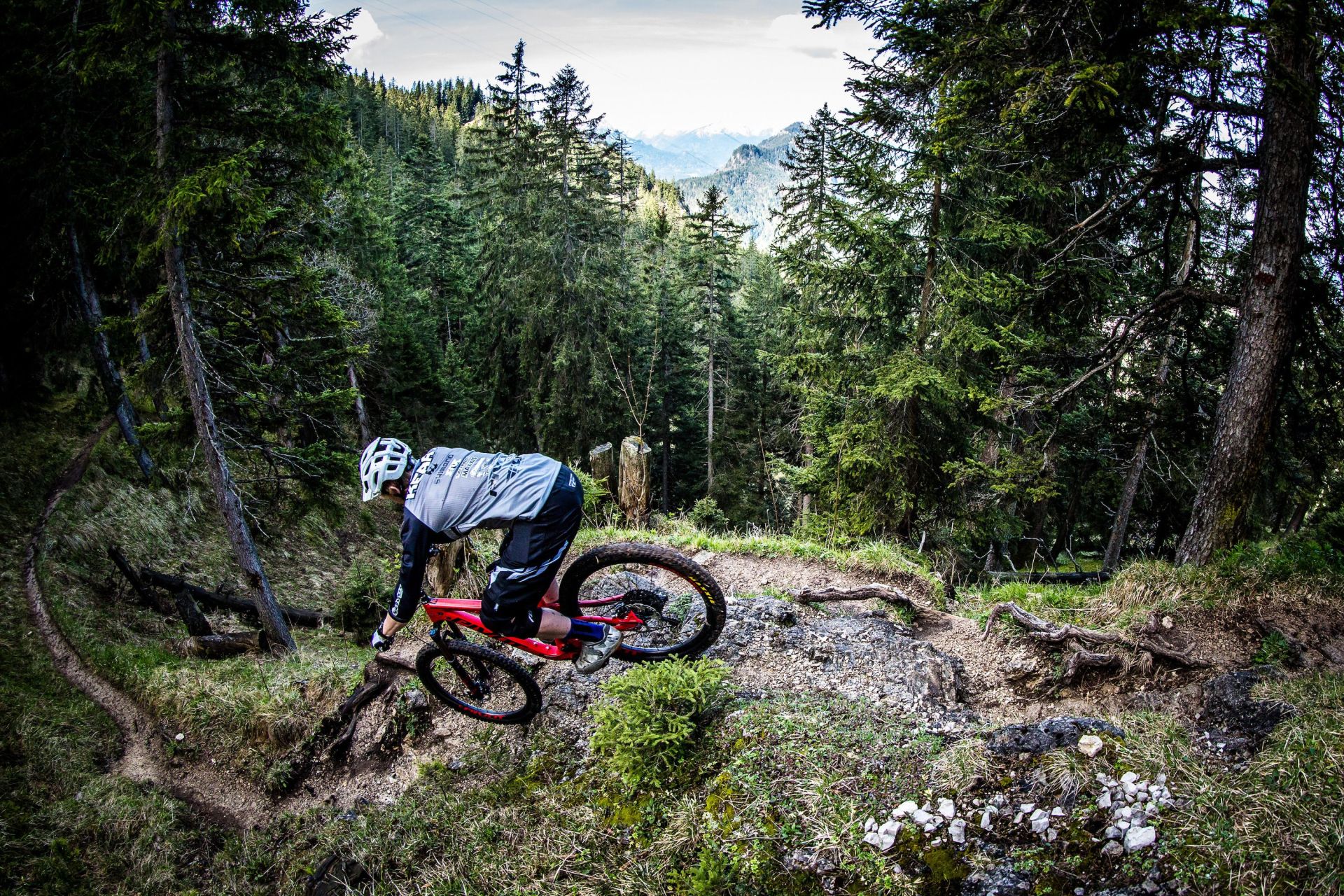 Boris Beyer / Pivot
Boris Beyer / PivotA quick look at the specs of a mountain bike (in particular the suspension travel and tire size) is normally all it takes to know whether the bike was built for pedaling all day or getting your heart rate up on big gaps and drops. In other words, whether it’s a trail bike or an enduro bike. The spec sheet of Pivot’s Mach 5.5 is confusing. It’s a little beefier than your average trail bike, but not quite as aggressive as you’d expect from an enduro build. The stock 2.6-inch tires are just below the “plus” category and slightly wider than those on most trail bikes. The 160mm fork says enduro, but the 140mm of rear travel doesn’t seem quite ready to get gnarly, at least on paper.
But bikes are more than a few specifications. In the case of the Mach 5.5, what looks like a hodgepodge of trail and enduro parts and geometries creates a bike that rarely feels out of place going uphill or downhill. It also has a trick up its sleeve — one that changes the way riders approach suspension setups.
Suspension setups are complicated, frustrating and expensive. But without them, mountain biking would suck — and it often does when your suspension isn’t just right. Engineers have tried countless designs to make shocks less “wallowy,” and yet tuning your suspension while you’re out on the trail still requires grabbing a lever to lock out your shock, as well as the black magic practiced by specialists who adjust about a dozen metrics to make your bike feel awesome. But on a bike like the Mach 5.5, which might find itself on rocky, technical downhills one minute and rooty climbs the next, the perfect suspension setting for one part of your ride isn’t what you’d want for another.
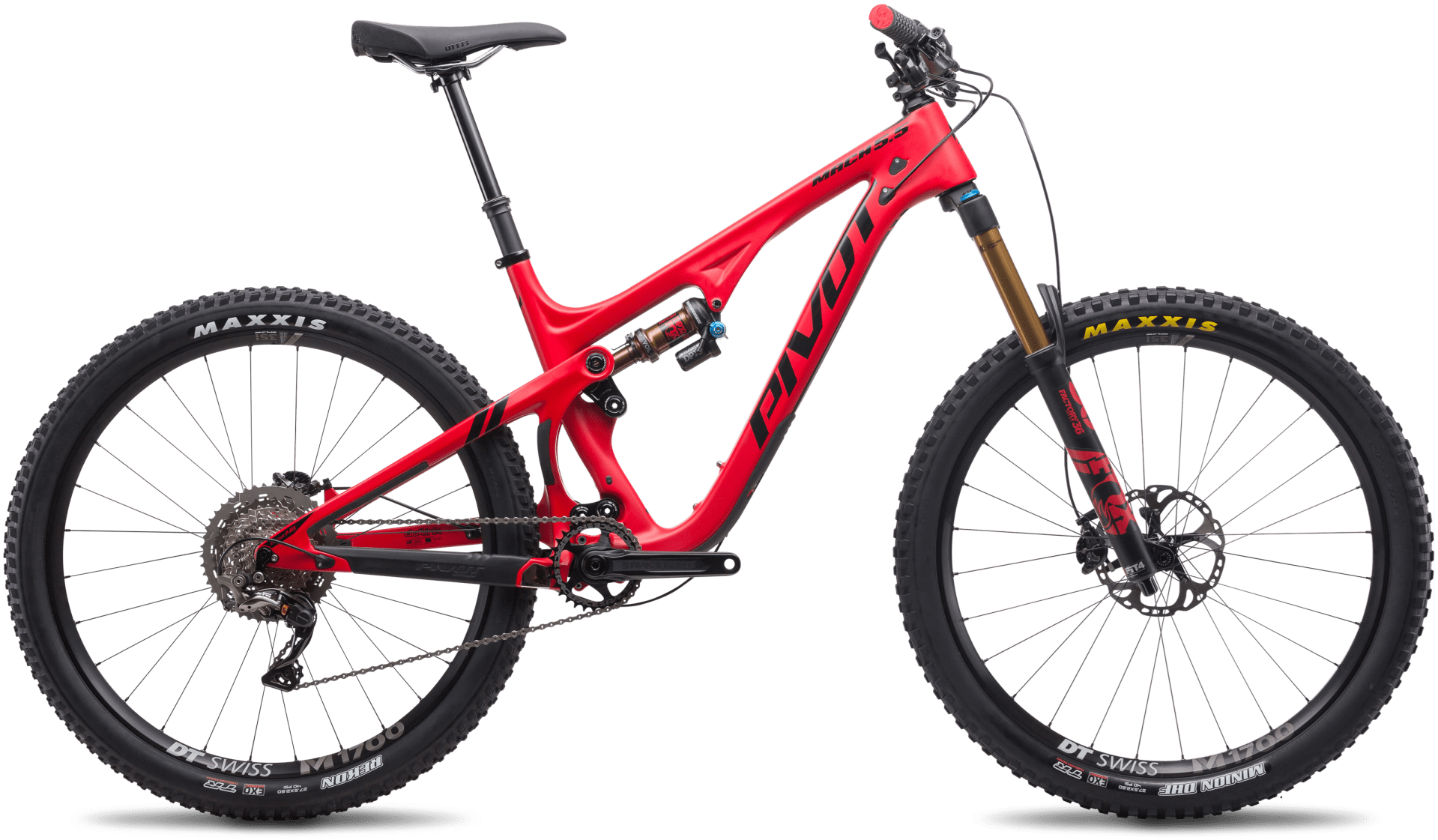 Pivot
PivotThat’s why shock manufacturer Fox and Pivot worked together to launch what they call Live Valve technology. Using sensors on the fork and frame, Live Valve senses impacts and opens up the shock just long enough to deal with them. This means that the bike has the suspension you need, but only when you need it. “You get more firmness on the climbs and a lot plusher of a setting on the downhills,” says Pivot founder Chris Cocalis, who spent more than two years developing the system with Fox. “The real beauty of it is that you’re not reaching down and flicking a lever. You don’t notice that it’s ever happening, you don’t even think about it.”
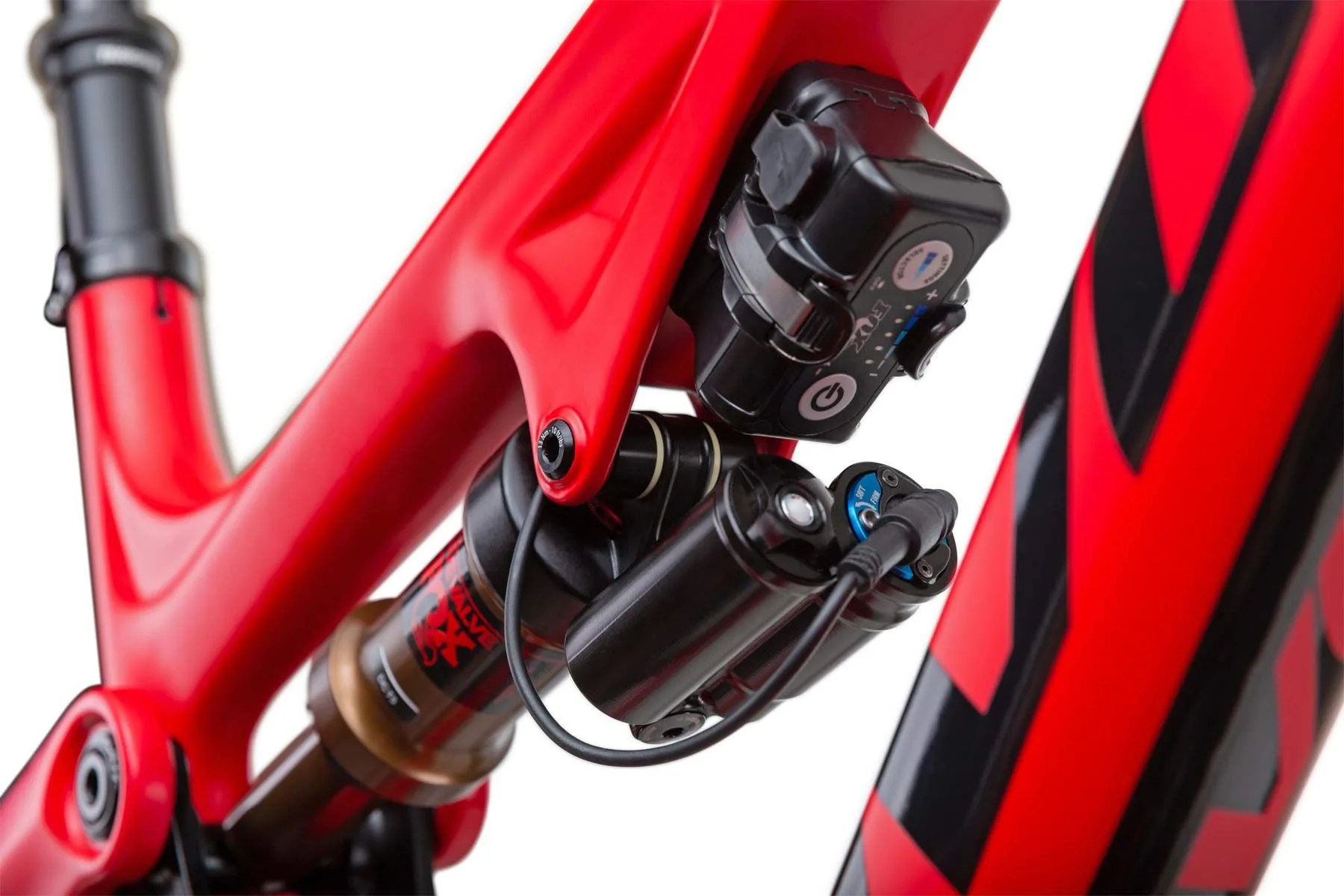 Pivot
PivotLive Valve is complicated technology, but it makes riding simple and has an immediate impact on the ride quality of a bike. In the simplest terms, a controller on the bike senses if the rider is going uphill, downhill or riding level terrain, and it makes adjustments to the suspension accordingly — without the need for rider input. On climbs, the controller only opens the component (fork or shock) that experiences an impact, and only on bigger hits. This makes sure all of your energy goes into moving the bike uphill. On flat ground, the suspension stays open for longer, to react to impacts in quick succession, but not so long that the bike wallows or corners poorly. When you’re pointed downhill by more than six degrees (this angle is adjustable), an impact on the front triggers both shocks to stay open and remain open until it senses a return to more regular terrain. And if you’re airborne, Live Valve can sense that, too, and open up both shocks.
In practice, Live Valve allows a bike like the versatile Mach 5.5 to be even more enjoyable — through simplicity. “[Live Valve] is seamless,” Cocalis says. “You don’t notice it, but it makes the bike ride better all the time.” There’s less time spent tinkering and more time spent smiling as you rip up climbs and send technical singletrack.
The Mach 5.5 is the perfect bike for this sort of technology, with Live Valve making the most of its travel and preventing that travel from getting in the way of efficient pedaling. It’s getting close to the sort of quiver killer that marketing materials have promised for decades. It might not win a World Cup Cross Country or Downhill race, but chances are you won’t, either. What this bike will do is make it very unlikely that you’ll ever wish you were riding another bike. — James Stout
- Frame Material: Carbon fiber
- Shock: Fox Factory Live Valve (140mm of travel)
- Fork: Fox Factory Live 36 (160mm of travel)
